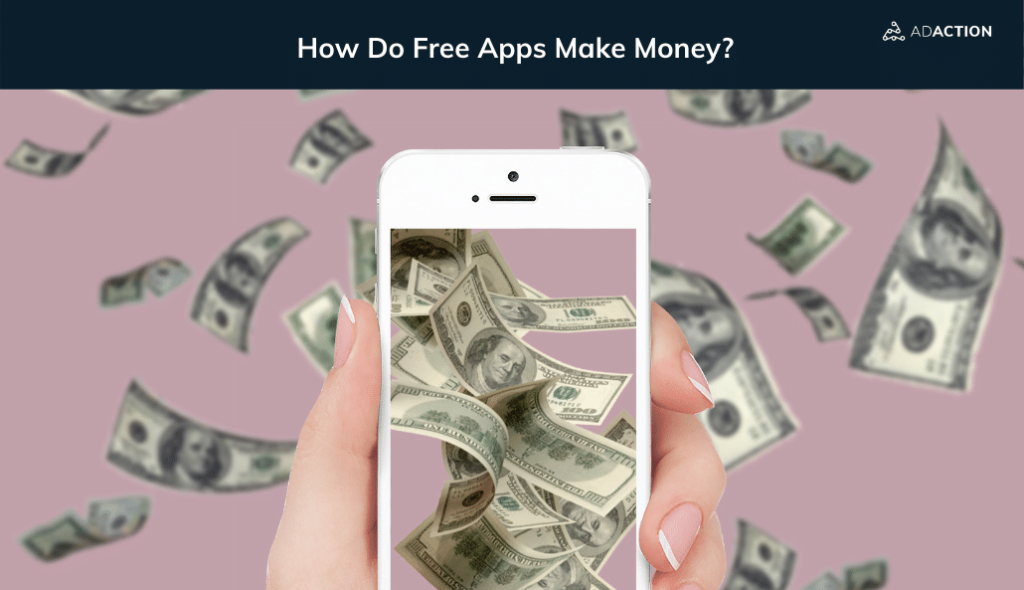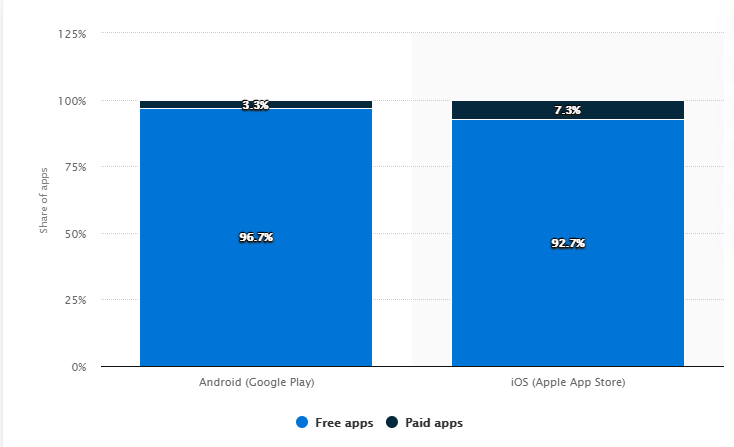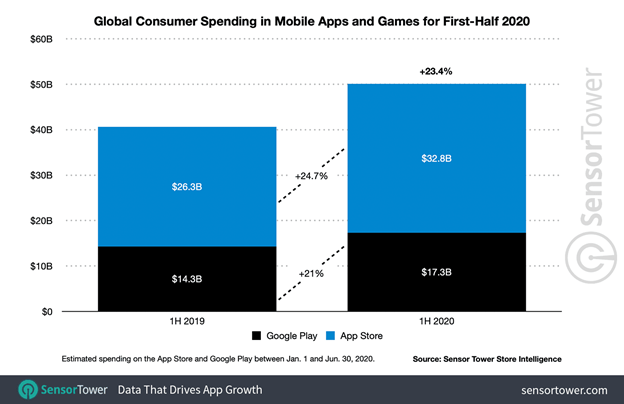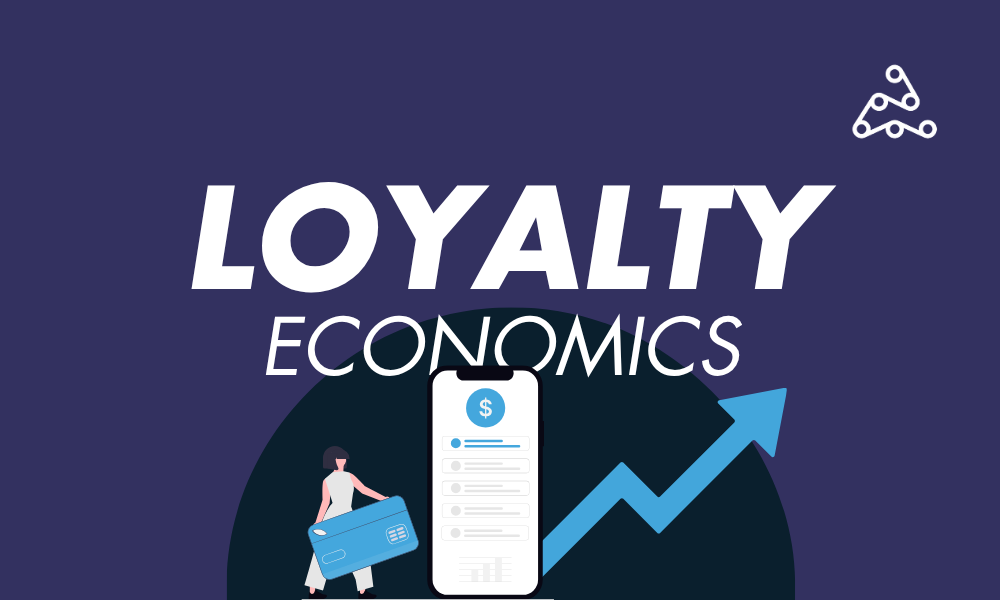The overwhelming majority of apps available on the App Store and Google Play are free, but that doesn’t mean there isn’t revenue to generate. How do free apps make money? There are a host of opportunities and strategies that mobile app marketers can leverage. Whether your app is just launching or has been in stores for years, many mobile app monetization methods are still left to explore.
How Much Revenue Do App Stores Generate?
In 2020’s third quarter, Google Play had revenues of $10.3 billion, a 33.8% increase compared to the same period in 2019. The App Store generated $19 billion in Q3 2020. Those numbers represent all transactions—paid downloads, subscriptions, and in-app purchases (IAPs). Thus, we can conclude that since free apps are the most prevalent, they also account for most of these figures.
We also know that consumer behaviors changed dramatically in 2020. Users downloaded more apps and spent more time on them. The type of apps growing in usage reflects these shifts, with the biggest category spikes being video players, gaming, and education. (See all the stats on these data points in our mobile app trends year-end review.)
So how do free apps make money? What’s the secret to free mobile app monetization?
Strategies to Make Money on Free Apps
App monetization isn’t new. It’s evolving as the mobile app environment matures. Most of these strategies are novel. However, that doesn’t mean that they are effective. As we discuss how free apps make money, we’re bringing a new perspective on popular methods.
In-App Ad Revenue
Most free apps engage with mobile app marketing platforms to show ads on their apps. Free apps are highly dependent on in-app ad revenue. Ads range in levels of intrusiveness and income.
- CPM (Cost per Mille): This model doesn’t require the user to interact. Least intrusive, lowest fees.
- CPC (Cost per Click): Advertisers pay apps when users click on the ad. Moderately intrusive but with higher fees.
- CPA (Cost per Action): Advertisers pay when users take a specific action. Most intrusive with the highest revenue.
Numerous ad types can work for apps:
Interstitial Ads
These full-screen pop-ups display at specific time frames. A strategic approach to pop-ups can add to their effectiveness. For example, media sites may use them when a user clicks to the next story. Games present them between levels.
Some best practices include:
- Don’t use them at app open or close.
- Refrain from overwhelming users with continuous recurring ads at every action is annoying and hampers the user experience (UX).
- Avoid interrupting users during a task with an ad.
- Make it clear for the user to dismiss the ad.
- Follow all the rules of the app stores.
Banner Ads
These ads appear at the top or bottom of the page. They are small and usually not distracting to the user. CTR (click-through rates) are typically low. These numbers can increase if they are relevant to the user (downloading similar games or retargeting from websites the user visited recently).
Native Ads
A native ad experience appears like a natural part of the app. Even though it’s not a pop-up or a banner, users aren’t fooled into believing it’s not an ad. In fact, many app consumers don’t like them. They are lower on the revenue ladder, as well.
What Do App Users Think About Ads?
It’s not fair to say that all people hate online ads. Several interesting studies give you more exact details on what they hate.
- 83% of people agree not all ads are bad.
- Pop-ups are the least popular, with a 73% disapproval rating.
Ads turn consumers off when they don’t look polished or professional, with 63% saying so.
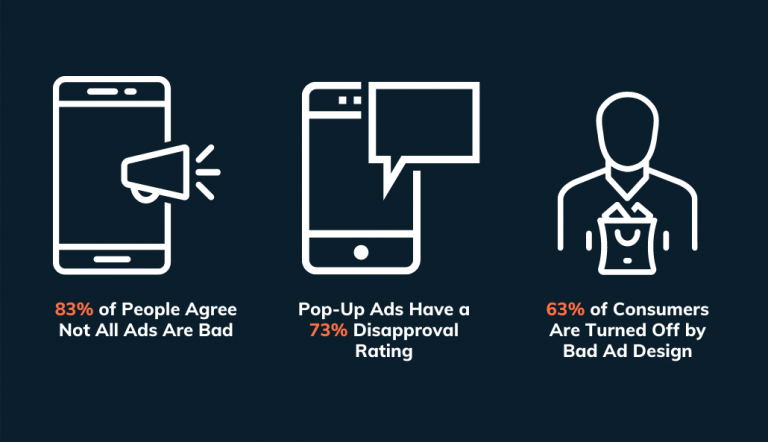
From these data points, you can more strategically appeal to users by respecting their experience, using the least intrusive ad types, and ensuring that ads on their apps are attractive.
Ad-Free Options
As we’ve just discussed, people don’t like ads. Consumers have been seeing ads since birth and encounter them in every medium. There’s certainly a lot of ad blindness—the ability to ignore them because we expect them. Frustrations can mount, and users can abandon sessions, so ad-free apps are growing in popularity.
Many different app categories are using this approach, from gaming to news sources. For loyal users, they may be willing to pay a nominal fee to get an ad-free experience. Over time, those can add up and become a major contributor to ad revenu
Promoting Subscriptions
News services, streaming platforms, and cloud services are heavily monetizing subscriptions on their apps. Apps can use this in two ways. First, they can offer a free trial then require a subscription to receive content or add features. Second, subscriptions can be part of an ad-free option or the ability to access exclusive content.
This method offers a reliable revenue stream and appeals to the most frequent users. However, it requires continuous innovation of features and content to keep subscribers hooked.
In-App Purchases
What will users pay for in a free app? There are multiple possibilities. One is to sell merchandise from your brand. For example, gaming enthusiasts may jump at the chance to buy branded hats and t-shirts. The downside is eCommerce integrations are tricky, and it requires building an actual online store.
More common in-app purchases relate to the actual app experience. Players can buy tokens or other virtual options. Angry Birds is a champion at this. In-app purchase revenue is increasing. Sensor Tower reported that global revenue from purchases rose by 23.4% in the first half of 2020.
Why the increase? It’s a mix of reasons. People are spending more time on apps because of the pandemic. Additionally, apps are providing better deals and enhancing engagement. It’s an excellent approach as long as your implementation is clear and easy. It also requires the design of the app to offer gateways to new features and functions.
Offerwalls: The Ad Alternative
Finally, let’s talk about offerwalls for monetization. Offerwalls, non-intrusive ad units, are very useful for driving incremental revenue. Almost any type of apps can try offerwalls.
You could realize these benefits:
- Apps using offerwalls, in most cases, have higher eCPM (effective cost per mille) values.
- Offerwalls deliver a method to monetize users that don’t complete IAPs.
- You can customize your offerwalls to be more attractive to audiences.
- They also have effects outside of revenue, like increasing engagement and usage.
- There are no platform fees for offerwalls, which means you don’t have to profit share with app stores.
Offerwalls are always a top recommendation from our mobile app marketing experts. Standalone placements are also available for premium exposure. They work with various campaign types—CPI, CPE, CPA, and CPC—across iOS, Android, mobile web, and desktop.
